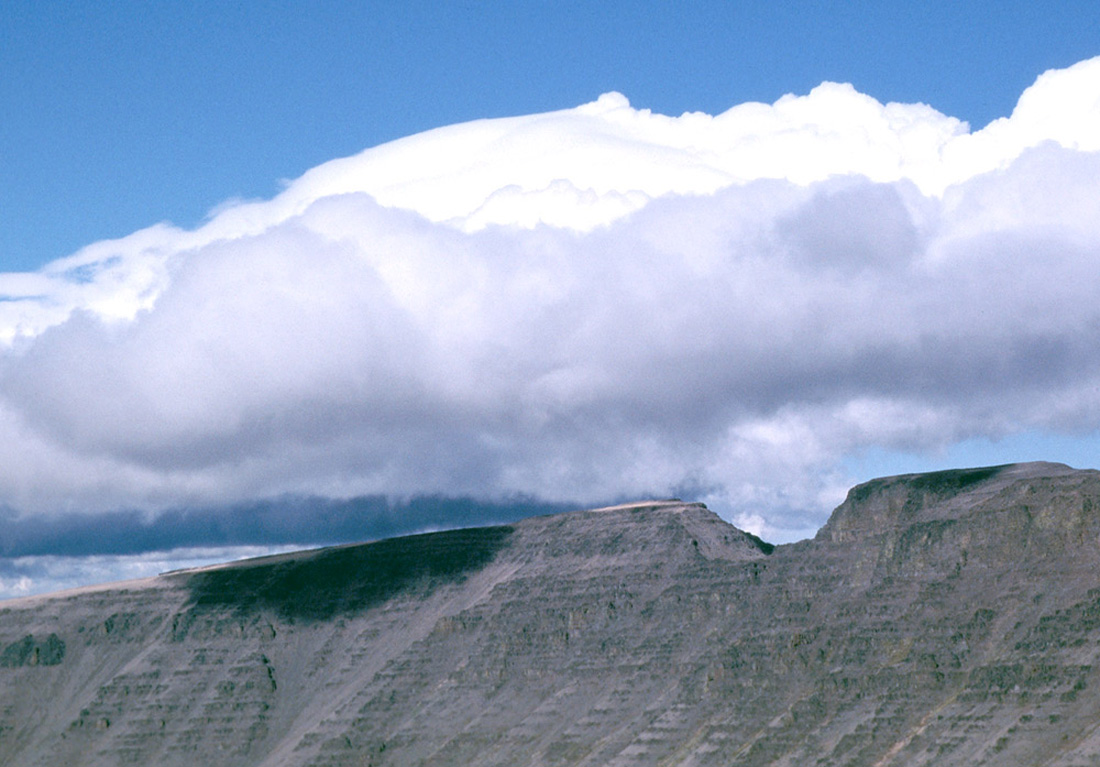The USGS Water Science School
Condensation is the term for water that is existing as a gas (water vapor) turning back into liquid water. That liquid could be drops of water on the inside of your home windows on a cold winter day or as tiny cloud droplets that are small and light enough to float overhead as clouds. The raindrops that ruin your picnic are larger water drops that formed by collisions of very small cloud particles—cloud particles formed by the condensation of water vapor in the air.
Condensation happens because of temperature changes. Warmer air can contain more water vapor than colder air, so when air rises up from the heated earth's surface high into the sky (warm air rises, as I'm sure you've heard), to where the temperatures are colder, condensation happens and clouds form.
You may ask: "Why are these clouds hanging around right above this ridge?" It is because the air is moving from left to right in this case, along the ground. As the air hits the ridge, it flows upward (and you know the higher in the sky you go, at least for a while, the colder it gets). The air rushes upward over the ridge and it gets cooled as it gains altitude. When air is chilled, the water vapor in the air condenses out into tiny liquid water particles, which form the clouds.

Credit: Bureau of Land Management